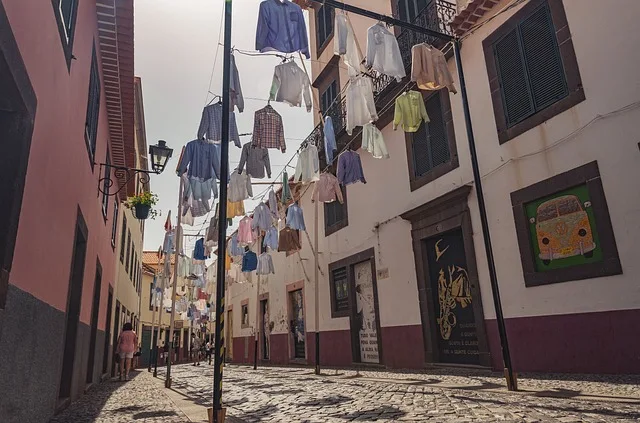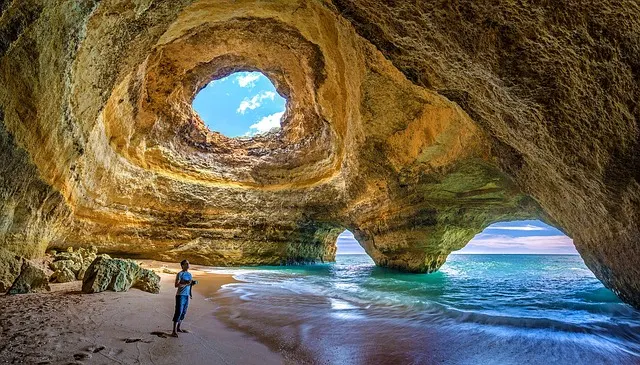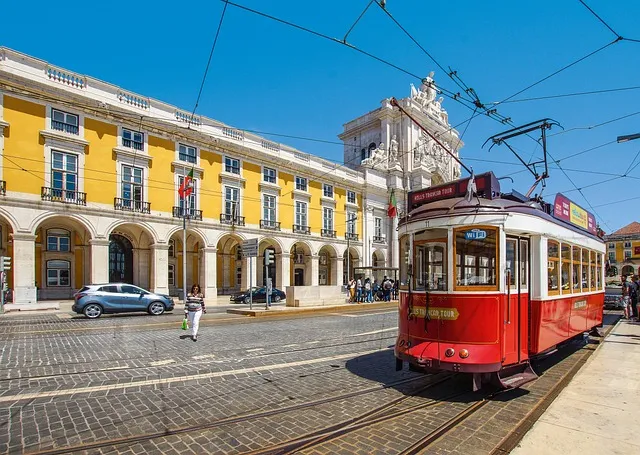The Best and Worst Times to Visit Portugal
With its stunning beaches, rich history, vibrant cities, and Mediterranean climate, Portugal is an increasingly popular destination for travelers from around the world. However, the best time to visit this beautiful country depends on what you want to experience. Here is an in-depth look at the pros and cons of visiting Portugal during different times of the year, to help you plan the perfect Portuguese getaway.
Why You Should Visit Portugal
Before diving into the details of when to visit, it's worth highlighting some of the main reasons Portugal should be on your travel bucket list:
- Diverse landscapes, from sandy beaches to mountainous national parks
- Fascinating history and culture, influenced by centuries of Roman, Moorish, and Portuguese history
- World-class cuisine, including fresh seafood, flavorful wines, and the iconic pastel de nata custard tarts
- Vibrant cities like Lisbon and Porto, with charming neighborhoods, great food, and nightlife
- Stunning architecture, from medieval castles to Manueline monuments
- Ideal climate, with mild winters and warm, sunny summers
- Great value compared to other European destinations
- Friendly locals who take pride in their culture and love to share it with visitors
No matter when you visit, Portugal offers something unique. The country's diversity means you can tailor your trip based on weather, budgets, crowd levels, and activities.
Probably the Least Busy Time to Visit Portugal
If you want to avoid the crowds and don't mind some rainy days, the quietest time to visit Portugal is from November through February.
The major pros of visiting during the Portuguese winter are:
- Minimal lines at major attractions like the Belém Tower, Jerónimos Monastery, and Sintra palaces
- Easier reservations at popular restaurants in Lisbon, Porto, and other foodie hubs
- Lower prices for accommodation and airfare compared to the high-season
- A better chance to mingle with locals and immerse yourself in Portuguese culture
- The holiday festivities and decorative lights in December and early January
However, the winter does come with some downsides:
- Cool, wet weather, with average highs of just 15°C in Lisbon and Porto
- Some attractions and restaurants may have reduced hours or be closed
- Beaches won't be swimmable, though coastal walks are still pleasant
- Limited sunlight, especially in December and January
If cooler weather doesn't bother you, November, February, and even March are great shoulder season choices, with thinner crowds and milder temperatures.
Save Big on Your Portugal Trip from November to March
Traveling to Portugal during the low season between November and March generally means lower prices on flights, hotels, tours, and attractions.
Airfare can be up to 25% cheaper compared to summer. Hotels also offer low season rates, with five-star properties in Lisbon averaging 20-30% less.
You can save on popular sights like the Belém Tower and Oceanário de Lisboa aquarium, which offer discounted winter ticket prices. Tours and activities like food tours, port wine tastings, and fado shows are easier to book last minute and may offer deals as well.
Restaurants try to attract locals with cheaper lunch menus and specials. And you'll find sales at shops eager for off-season business.
Booking bundle deals like discounted rail passes, multi-city flights, hotel packages, and sightseeing passes can maximize your savings too.
Just keep in mind potential closures, reduced hours, and limited availability for coastal activities like boat tours and beach rentals.
Outdoor Adventures Are Best from April to May and September to October
Spring and fall offer ideal weather for Portugal's many outdoor activities, along with thinner crowds than summer.
In Lisbon, Porto, and the Algarve, highs average a comfortable 20-25°C. Rain is minimal, particularly by May and September.
The conditions are perfect for:
- Hiking in parks like Peneda-Gerês and Serra da Estrela
- Cycling across beaches, farmland and vineyards
- Trying water sports like surfing, windsurfing, kayaking and more
- Playing golf on world-class courses in the Algarve
- Joining walking tours around cities and scenic villages like Sintra, Óbidos and Coimbra
Spring is slightly cooler while fall brings bigger crowds of European travelers. Both seasons are excellent times to visit Portugal if you want to fully experience the country's natural beauty.
The Summer High Season is Ideal for Beaches
From June through August, Portugal comes alive to welcome sun-seeking visitors.
The big highlights of visiting Portugal in summer are:
- Sunny, dry days with 10+ hours of sunshine and highs around 28-30°C
- Warm ocean temperatures averaging 19-23°C perfect for swimming
- A lively atmosphere with cultural festivals, nightlife, and events
- Open attractions and extended hours at sights, shops, and restaurants
On the downside, prepare for:
- Peak crowds, especially in Lisbon, the Algarve, and other coastal areas
- Long lines at major museums, attractions, restaurants, and beaches
- Hotter temperatures away from the coast and in big cities
- Prices for flights and hotels surging over 20-30%
If you plan to focus on beach days, ocean sports, nightlife, and summer festivals like Santos Populares, June to August is the best time to experience Portugal. Travel inland to beat some crowds too.
Avoid Peak Crowds by Visiting Portugal in the Shoulder Season
To avoid extreme heat and the busy summer travel season, target your trip for May, June, September, or October.
In the spring, you'll find moderate temperatures ideal for city exploring, hiking, and sightseeing. Flower blooms and local festivals add to the appeal. September is even warmer with beaches still at their summer prime.
Some advantages of visiting during the shoulder season:
- Fewer crowds at major attractions and destinations
- More availability for tours, activities, hotels, and restaurants
- Mild weather and extended daylight for outdoor adventures
- Lower prices for flights and hotels before summer peaks
- Local harvests and autumn food festivals in September/October
While resort towns and beaches are less crowded than July-August, major cities still see plenty of visitors. Booking in advance is still advised.
Overall, aim for shoulder season travel if you want to experience Portugal's best weather, sights, and festivals minus the summer crowds and prices.
Get Endless Sunny Beach Days from June Through August
If your Portugal dreams involve relaxing on gorgeous beaches under sunny skies, plan your trip for summer.
Starting in June, southern regions like the Algarve begin seeing high temperatures in the mid 20°Cs. By July and August, all of Portugal's coastal areas offer ideal beach weather.
You can expect:
- 8-12 hours of sunshine and cloudless blue skies
- Average highs of 28-30°C with cooler ocean breezes
- Water temperatures of 19-23°C, warm enough for swimming all-day
- Prime conditions for sunbathing, boat tours, water sports, and more
The best beaches to visit include:
- Praia do Camilo in the Algarve
- Costa Nova in the Center
- Praia de Mira in the Coimbra region
- Praia da Ursa in the Lisbon area
In addition to the Algarve, central beach towns like Figueira da Foz, Nazaré, and Peniche have summer highs around 25°C. Northern Portugal is a bit cooler at 22-23°C.
If you're flexible on dates, late July to mid-August sees the most sunshine and warmest ocean temperatures for an idyllic beach escape.
Visit the North for Cooler Temperatures From June to August
While southern Portugal sizzles during the summer, the northern regions remain relatively cool, making for a more comfortable visit.
In Porto and the surrounding north, high temperatures from June to August average in the low to mid 20°Cs. The daily highs typically range from:
- June: 22-25°C
- July: 25-28°C
- August: 26-30°C
The cooler climate means you can comfortably explore Porto's hilly neighborhoods, visit wineries in the Douro Valley, hike in Peneda-Gerês National Park, and stroll historic cities like Guimarães and Braga even during midday in the summer.
You'll also avoid intense heat and bigger crowds that gather in Lisbon and beach towns like Cascais and Sesimbra.
The ocean along the Costa Verde stays cooler too, around 17-20°C, but still pleasant for swimming and water sports.
For heat relief plus great value accommodations and food, northern Portugal is an underrated summer option.
Visit the Azores Year-Round for Outdoor Adventure
Situated in the Atlantic Ocean, the Azores islands maintain mild weather and attract fewer crowds all year.
The sea keeps Azores temperatures moderate, with summer highs of 22-25°C and winter highs of 15-17°C. Rain is common but rarely disrupts outdoor activities.
Every season offers natural beauty and adventures like:
- Spring: blooming flowers, birdwatching, whale watching
- Summer: swimming, snorkeling, kayaking, hiking trails
- Fall: relaxing hot springs, mountain biking, photography
- Winter: surfing, canyoning, paragliding, scenic walks
Accommodations range from affordable local guesthouses to luxury resorts and hotels. Airfare deals also pop up year-round.
Thanks to its remote island setting and stable weather, the Azores provide an idyllic escape from the mainland crowds any time you visit.
Beat the Crowds By Visiting Portugal in the Low Season
To avoid long lines, packed attractions, and difficulty booking hotels and restaurants, consider a trip between November and February.
Lisbon, Porto, and southern resort areas see far fewer visitors over the winter. You may have popular sights like the Pena Palace and Jerónimos Monastery near to yourself.
While ocean temperatures are too cold for swimming, you can still enjoy seaside hikes, coastal drives down to the Algarve, and fresh seafood.
Cities come alive with holiday light displays and festive vibes through New Year's. And iconic attractions like the María Pita statue in A Coruna, Spain, and the Ponte Luís I bridge in Porto make for stunning winter photography.
The only major drawbacks are cooler temperatures, rain, and reduced tourist operations. Focus your planning on urban sightseeing, indoor museums, and dining, and Portugal's low season offers an idyllic European getaway.
Plan Your Portugal Trip Around Events and Festivals
Another tactic to optimize your trip is to schedule it around one of Portugal's vibrant festivals or events.
Top events worth planning for include:
- February/March: Carnival
- April: Semana Santa (Holy Week festivals)
- June: Festas dos Santos Populares (Saints Days)
- July: Baixo Mondego Music Fest in Coimbra
- August: Festas de Cidade in Porto
- September: Festa de São Mateus in Viseu
- November: São Martinho harvest festivals
By timing your travels around major events, you can immerse yourself in Portuguese culture and take part in celebrations few tourists get to experience.
Just keep in mind that attending popular festivals like Carnival means booking well in advance to secure flights, hotels, and transportation. Aim to book 4-6 months beforehand if visiting any famous festival.
No matter when you can make it to Portugal, planning your trip around the country's vibrant events will make for an unforgettable experience. With attention to season, weather, and crowds, you can discover the very best of Portugal any time of year.








.jpg)


